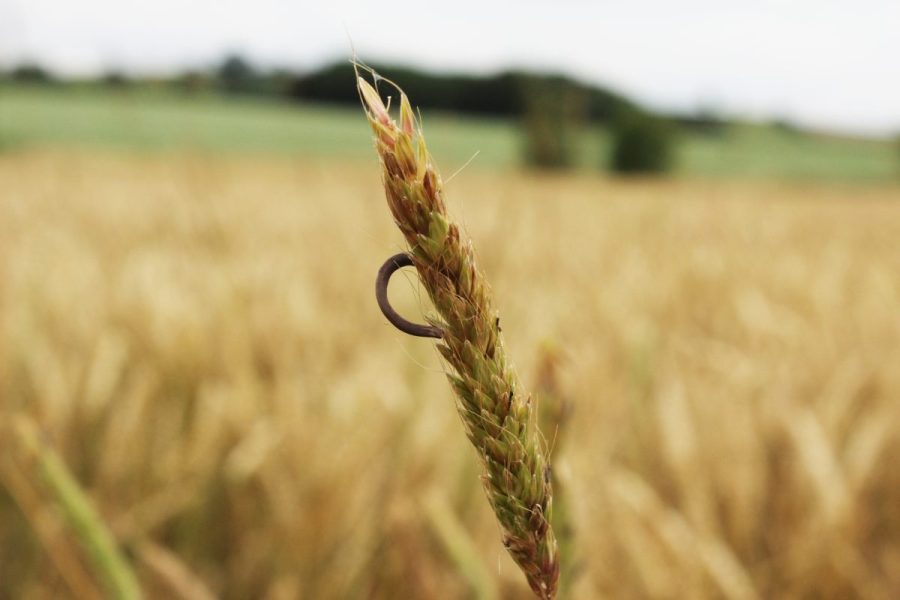Ergot was the talk of last harvest, and now, a new AHDB review is giving practical guidance to minimise risk throughout its lifecycle. CPM dives into the detail.
“Speak to any UK farmer, grain merchant or co-operative, and they’ll tell you ergot prevalence has increased considerably during the past five years.” JOE BRENNAN
By Mike Abram
If Harvest 2024 is remembered for anything, arguably, it’s ergot – lashings of rain during the early part of summer proved the conclusion of what was a perfect storm for infections.
It all started in autumn 2023, recalls ADAS principal consultant in crop pathology, Philip Bounds. “It was a difficult drilling season so there were a lot of crops planted into adverse conditions, leading to inconsistent crops that were more susceptible.
“Weed control in autumn 2023 and spring 2024 was also challenging, so grassweed pressure was high. Then, the cool and damp weather around flowering was perfect for ergot infection,” he explains.
In reality, this was the culmination of a longer period where ergot has been increasing in prevalence, according to Joe Brennan, head of technical and regulatory affairs at UK Flour Millers. “Data collected by AHDB’s annual monitoring of contaminants in UK cereals used for processing food and animal feed has clearly shown an increase in ergot alkaloids,” he says.
“Beyond that official dataset, while there might not be any publicly available related data showing ergots are increasing, speak to any farmer, grain merchant or co-operative, and they’ll tell you prevalence has been increasing considerably in the UK during the past five years.
“In particular from 2022, 2023 and 2024 crops, there was an iterative increase in ergot occurrences, which is very concerning.”
FOOD SAFETY
Ergot is primarily a food safety issue – the ergot sclerotia which can grow in the ears of cereals contain the mycotoxin ergot alkaloids, and ingesting these can be harmful for both human and animal health.
But it doesn’t have much impact on yield, which could contribute to why despite being a well-known cereal disease for hundreds of years, it hasn’t had much research prioritisation, or at least from a husbandry perspective, suggests Joe.
To meet the legal limits (see box), merchants, co-operatives, millers and other processors have made investments in grain cleaning, particularly colour sorters, to remove ergots. However, as well as the initial capital investment, the cost of running cleaners each season adds significant cost across the supply chain, he adds.
A further challenge is that previous AHDB research by Dr Anna Gordon, then at Niab, found that while cleaning was effective at removing the ergot sclerotia, it can break the ergots into smaller pieces that could adhere to grain and bypass cleaning, leaving alkaloid contamination.
“The work also looked at ergot infection in the ear and discovered that infections resulted in loading of alkaloids above and below the initial point of infection. These grains appear visually normal but still contain a background level of alkaloids,” points out Joe.
“What that could mean, although we don’t know the magnitude of this effect, is a lot of invisible contamination of the crop with ergot alkaloids that you can’t clean out as nothing distinguishes those grains from healthy ones.
“And with no rapid test for those alkaloids at intake, no way of visually inspecting and no way of cleaning them out, that’s really challenging.”
All of that combined, along with the commercial realities of rejections for farmers, is why AHDB has funded work to support farmers in tackling ergot infections on farm, says Kristina Grenz, senior cereal product quality scientist for AHDB.
“We had questions from levy payers about the increase in ergot and whether it was linked to changing farm practices – such as the introduction of environmental stewardship options or reduced cultivations – and whether it could be managed despite limited fungicide and seed treatment options,” she explains.
A key piece of work has been a review by ADAS of 450 relevant research papers to provide updated management guidelines. “It quickly became clear that we weren’t going to stumble on one silver bullet and that an integrated combination of approaches all year round would be required,” reflects Philip.
FOUR TIMINGS
Indeed, using knowledge about the life cycle of the ergot pathogen, Claviceps pupurea, four timings were identified as opportunities to reduce infection. “The first is reducing ergot inoculum in the soil for primary infections,” he highlights.
“Keeping records of in-field infestations will help to understand whether a field is high risk. In such fields, rotation will play an important role in reducing primary infection with the frequency of cereals an important higher risk factor.”
Where there are ergot sclerotia on the soil surface, ploughing to greater than 5cm is an effective way of reducing the inoculum, as the ergot can’t germinate and produce spores, says Philip. “But be wary of ploughing up ergot inoculum that’s been buried the year previously – be conscious of the position of ergot sclerotia in the soil, similar to managing the weed seed-bank.”
Minimum tillage will also bury some of the sclerotia to greater than 5cm, so will have some effect, while direct drilling leaves the sclerotia on the soil surface. Ultimately, more research is required to quantify the impact of various min-till systems better, he adds, which could help growers target direct drilling or min-till systems according to field risk.
Drilling certified or farm-saved seed that’s been cleaned, while avoiding using farm-saved seed from fields that have had a significant problem, is another management tactic growers should employ to reduce primary inoculum, he suggests.
In addition, two seed treatments have label claims for ergot suppression, but again this is an area that requires more work to quantify the impact in field conditions, he says, while cleaning cultivation and harvesting equipment between fields just as with grassweeds should help reduce inadvertent spreading of sclerotia.
The next target stage is growing a crop that’s less likely to be infected by aerial ascospores. That could be through planting a cereal crop or variety that has more closed flowers, which reduces the opportunity for infection. In order of risk, rye then triticale are the most susceptible, with spring wheat, winter wheat, barley and oats less susceptible in that order.
“Variety can also have an effect, but again, more information is required,” adds Philip. “If you could avoid varieties with more open flowers or grow one that flowers for a shorter period, that could be beneficial.”
It’s something AHDB is considering in terms of how to provide information, says Kristina. “Talking to grain store managers, they do see varietal differences in ergot levels, but it’s figuring out the best way to incorporate it, for example, in Recommended List trials. As a seasonal, weather-dependent pathogen, it can be hard to achieve consistent results.”
Growing a uniform crop is strongly linked to reduced infections, due to flowering more consistently during a shorter period, continues Philip. Whereas choosing varieties that put out late tillers – while potentially positive for yields in a challenging season – increase the length of flowering and add to ergot risk.
Following good practices such as using appropriate seed rates, or potentially variable seed rates according to soil type changes, and sowing into a good seedbed to ensure consistent drilling depth will help with uniformity, he says.
NUTRITIONAL NUANCES
Another crop management practice, nutrition, is vital for healthy crops to flower effectively. But in particular, the review found correcting deficiencies of copper and boron, especially on certain soil types such as organic and peat soils, reclaimed heathland sands and shallow organic chalk soils, could reduce ergot.
“Copper deficiency can result in pollen sterility which makes the flowers open more, increasing susceptibility to ergot. Equally, boron is crucial for growth of pollen tubes, and deficiency is linked to high pH, so keeping a close eye on pH and boron levels on deficient soils are important.”
Target three in the ergot lifecycle is preventing secondary infection spread. “When the pathogen initially infects the ears, the hyphal mass that develops forms a honeydew that is rich in ergot conidia and can be spread by insects, rain splash or physical transfer,” points out Philip.
“Grassweeds are particularly good at encouraging secondary spread because they tend to flower earlier, so the honeydew is around when cereals flower. That means grassweed control is important to reduce secondary spread.”
Unfortunately, spring cropping is a double-edged sword – good for grassweed control, but more susceptible to ergot infections, he says.
Secondary spread also makes management of grass margins in stewardship schemes significant, as they act as a source of both primary and secondary inoculum. “The same applies for a sown or naturally-occurring piece of grassland, beetle bank, buffer strip or hedge bottom,” notes Philip.
“Ergot from different grass species differ in their infectivity for cereals and their flowering period, so grass species that combine low infectivity with late flowering where honeydew inoculum increases after the main risk period for cereal infection, should minimise the spread of ergot to adjacent crops,” he explains.
“For example, meadow fescue or Yorkshire fog have generally lower infectivity and later flowering and so would lower the ergot risk in a grass mixture, whereas varieties such as cocksfoot and timothy have been found to have high infectivity for wheat while also having a flowering period that overlaps.”
The final target timing growers can manage is limiting contamination once a crop has been infected with ergot. “Make records of fields that are likely to be high risk and monitor them more intensively,” advises Philip. “If you identify a particular field or even an area of a field that’s badly infected, consider combining and storing it separately.
“Also monitor grain being tipped in store – it can be easier to see ergot in trailers than fields – and consider if it can be tipped separately to avoid contaminating the whole heap.”
Cleaning using a colour sorter is the most effective way of removing ergots but comes at a cost in both time and money, he comments. “The final step is updating records, so the next time that field is in cereals ergot can be taken into consideration.”
This article was taken from the latest issue of CPM. Read the article in full here.
For more articles like this, subscribe here.
Sign up for Crop Production Magazine’s FREE e-newsletter here.




